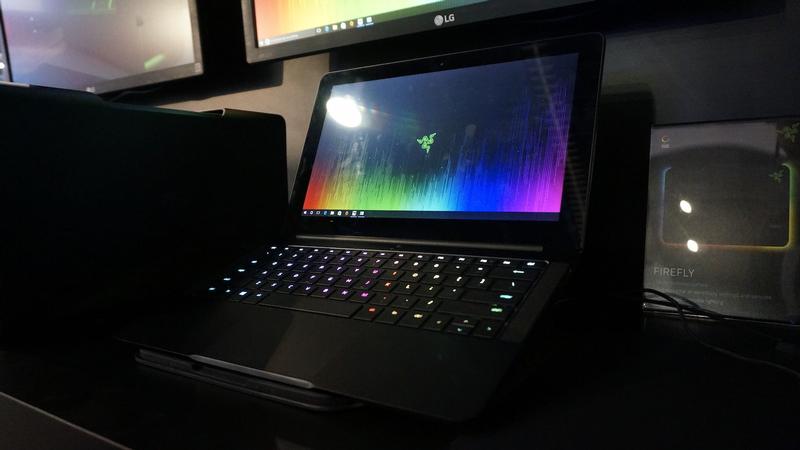Razer Blade Stealth and Razer Core review: Release date and price
We were told the device is shipping now from the Razer Store in some markets and will be available from the Microsoft Store in February. However, the US site states only that the UHD models will start shipping on 29 January. For the Razer Core, less is known. It will be available in the first half of 2016 but there’s no price for the device yet. See also: Samsung Notebook 9 hands-on review.
Razer Blade Stealth and Razer Core review: Design and build
The Blade Stealth joins the 14- and 17in models in the range but it’s the smallest and most portable yet. It’s got a 12.5in screen and is just 13.1mm and 1.25kg. Not as light as the 15in LG gram 15 but Razer offers a much more sturdy build. We found the Blade Stealth to feel something like a MacBook Pro in black with a slightly rubbery finish. Meanwhile, the Razor Core is about the size of two mini-ITX PCs and has a simple yet stylish design in all-black. It’s well made and has a completely tool-less design. A handle on the back means you can simply pull the draw out and inset or remove the graphics card easily.
Razer Blade Stealth and Razer Core review: Hardware and specs
The 12.5in is small and comes with at least a QHD (2560×1440) resolution so that’s some serious amount of pixels per inch. However, should you want to push the boat out, you can get a 4K option (3840×2160). We’d recommend sticking with the former since the screen is pretty compact. One reason why you might want to with the 4K option is to get a larger 512GB SSD. The QHD model only gives you a choice of 128- or 256GB. The 4K model is also available in 256GB. There’s no choice when it comes to the processor and memory and you’ll be getting an Intel Skylake Core i7-6500U chip with 8GB of DDR3 RAM. Windows 10 comes pre-installed as you would expect. Razer has packed a lot of tech into this pint-sized gaming laptop with 11ac Wi-Fi, Bluetooth 4.1, a 2Mp webcam, HDMI 1.4b, two USB 3.0 ports and a Thunderbolt 3 (USB-C) port. Since the laptop runs off the Intel HD Graphics 520, it’s the Thunderbolt port which may come in very handy. You’ll use this to connect the Blade Stealth to the Blade Core with a supplied 40Gbps cable to give you desktop class graphics. This way you don’t need to have a separate gaming desktop PC as you can use these two new products combined. The Blade Core comes empty so you can insert an existing graphics card you have lying around or choose which new one you want to go for, AMD or nVidia. Some GPUs will support plug and play so you don’t even need to reboot the laptop. The early samples we looked at during CES 2016 weren’t quite working properly but that’s why the Core isn’t shipping just yet. The Core has a 500W power supply and has space for a double-wide, full-length, PCI-Express x16 graphics card. As well as the Thunderbolt 3 port, it features four USB 3.0 ports, Gigabit Ethernet and Chroma lighting (two zones). Another cool feature we need to point out is on the Blade Stealth. The laptop is the first to feature individually backlit RGB keys. This gives you an absolutely huge amount of potential when it comes to customisation since each key can be one of 16 .8 million colours. Tech Advisor’s Reviews Editor, Chris has been reviewing all kinds of tech for over 10 years and specialises in audio. He also covers a range of topics including home entertainment, phones, laptops, tablets and more.



